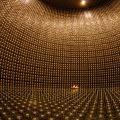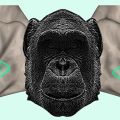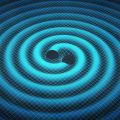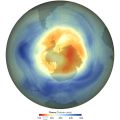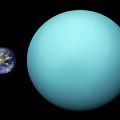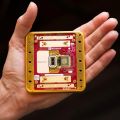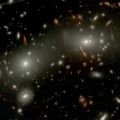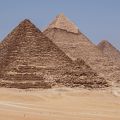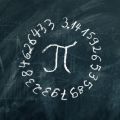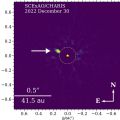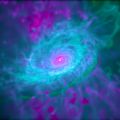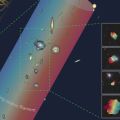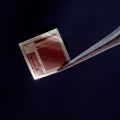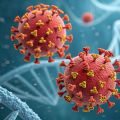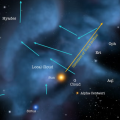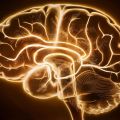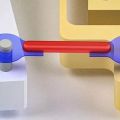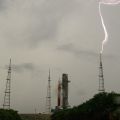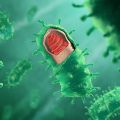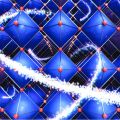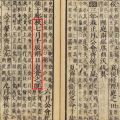Dans la deuxième période de sa carrière, Noether se tourne vers la théorie des annaux. À propos de son article Moduln in nichtkommutativen Bereichen, insbesondere aus Differential- und Differenzenausdrücken, Hermann Weyl affirme : « C'est là qu'apparaît pour la première fois l'Emmy Noether que nous connaissons tous, celle dont les recherches ont changé la face de l'algèbre. »
| Index | Année | Titre et traductions en anglais et français | Revue, volume, pages | Classification et notes |
| 17 | 1920 | Moduln in nichtkommutativen Bereichen, insbesondere aus Differential- und Differenzenausdrücken | Modules in Non-commutative Domains, especially Those Composed of Differential and Difference Expressions§ | | Mathematische Zeitschrift, 8, 1–35 | Ideals and modules. Written with W. Schmeidler. Seminal paper that introduces the concepts of left and right ideals, and develops various ideas of modules: direct sums and intersections, residue class modules and isomorphy of modules. First use of the exchange method for proving uniqueness, and first representation of modules as intersections obeying an ascending chain condition. |
| 18 | 1921 | Über eine Arbeit des im Kriege gefallenen K. Hentzelt zur Eliminationstheorie | On a Work on Elimination Theory by K. Hentzelt, who Fell in the War§ | | Jahresbericht der Deutschen Mathematiker-Vereinigung, 30 (Abt. 2), 101 | Elimination theory. Preliminary report of the dissertation of Kurt Hentzelt, who died during World War I. The full description of Hentzelt's work came in publication . |
| 19 | 1921 | Idealtheorie in Ringbereichen | The Theory of Ideals in Ring Domains§ | | Mathematische Annalen, 83, 24–66 | Ideals. Considered by many mathematicians to be Noether's most important paper. In it, Noether shows the equivalence of the ascending chain condition with previous concepts such as Hilbert's theorem of a finite ideal basis. She also shows that any ideal that satisfies this condition can be represented as an intersection of primary ideals, which are a generalization of the einartiges Ideal defined by Richard Dedekind. Noether also defines irreducible ideals and proves four uniqueness theorems by the exchange method, as in publication . |
| 20 | 1922 | Ein algebraisches Kriterium für absolute Irreduzibilität | An Algebraic Criterion for Absolute Irreducibility§ | | Mathematische Annalen, 85, 26–33 | |
| 21 | 1922 | Formale Variationsrechnung und Differentialinvarianten | Formal Calculus of Variations and Differential Invariants§ | | Encyklopädie der math. Wiss., III, 3, E, 68–71 (in: R. Weitzenböck, Differentialinvarianten) | |
| 22 | 1923 | Zur Theorie der Polynomideale und Resultanten | On the Theory of Polynomial Ideals and Resultants§ | | Mathematische Annalen, 88, 53–79 | Elimination theory. Based on the dissertation of Kurt Hentzelt, who died before this paper was presented. In this work, and in publications and , Noether subsumes elimination theory within her general theory of ideals. |
| 23 | 1923 | Algebraische und Differentialinvarianten | Algebraic and Differential Invariants§ | | Jahresbericht der Deutschen Mathematiker-Vereinigung, 32, 177–184 | |
| 24 | 1923 | Eliminationstheorie und allgemeine Idealtheorie | Elimination Theory and the General Ideal Theory§ | | Mathematische Annalen, 90, 229–261 | Elimination theory. Based on the dissertation of Kurt Hentzelt, who died before this paper was presented. In this work, and in publications and , Noether subsumes elimination theory within her general theory of ideals. |
| 25 | 1924 | Eliminationstheorie und Idealtheorie | Elimination Theory and Ideal Theory§ | | Jahresbericht der Deutschen Mathematiker-Vereinigung, 33, 116–120 | Elimination theory. Based on the dissertation of Kurt Hentzelt, who died before this paper was presented. In this work, and in publications and , Noether subsumes elimination theory within her general theory of ideals. She developed a final proof during a lecture in 1923/1924. When her colleague van der Waerden developed the same proof independently (but working from her publications), Noether allowed him to publish. |
| 26 | 1924 | Abstrakter Aufbau der Idealtheorie im algebraischen Zahlkörper | Abstract Structure of the Theory of Ideals in Algebraic Number Fields§ | | Jahresbericht der Deutschen Mathematiker-Vereinigung, 33, 102 | |
| 27 | 1925 | Hilbertsche Anzahlen in der Idealtheorie | Hilbert Counts in the Theory of Ideals§ | | Jahresbericht der Deutschen Mathematiker-Vereinigung, 34 (Abt. 2), 101 | |
| 28 | 1926 | Ableitung der Elementarteilertheorie aus der Gruppentheorie | Derivation of the Theory of Elementary Divisors from Group Theory§ | | Jahresbericht der Deutschen Mathematiker-Vereinigung, 34 (Abt. 2), 104 | |
| 29 | 1925 | Gruppencharaktere und Idealtheorie | Group Characters and the Theory of Ideals§ | | Jahresbericht der Deutschen Mathematiker-Vereinigung, 34 (Abt. 2), 144 | Group representations, modules and ideals. First of four papers showing the close connection between these three subjects. See also publications , , and . |
| 30 | 1926 | Der Endlichkeitssatz der Invarianten endlicher linearer Gruppen der Charakteristik p | Proof of the Finiteness of the Invariants of Finite Linear Groups of Characteristic p§ | | Nachrichten der Königlichen Gesellschaft der Wissenschaften zu Göttingen, Math.-phys. Klasse, 1926, 28–35 | By applying ascending and descending chain conditions to finite extensions of a ring, Noether shows that the algebraic invariants of a finite group are finitely generated even in positive characteristic. |
| 31 | 1926 | Abstrakter Aufbau der Idealtheorie in algebraischen Zahl- und Funktionenkörpern | Abstract Structure of the Theory of Ideals in Algebraic Number Fields and Function Fields§ | | Mathematische Annalen, 96, 26–61 | Ideals. Seminal paper in which Noether determined the minimal set of conditions required that a primary ideal be representable as a power of prime ideals, as Richard Dedekind had done for algebraic numbers. Three conditions were required: an ascending chain condition, a dimension condition, and the condition that the ring be integrally closed. |
